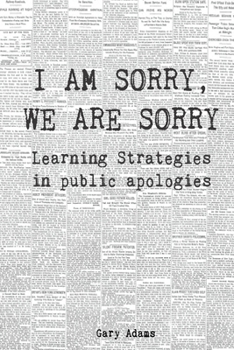I Am Sorry, We Are Sorry: Learning Strategies in Public Apologies
In the current 'Age of Apology', public apologies have become everyday occurrences; from corporate CEOs to Hollywood celebrities to political figures, the adage of 'never apologize, never explain' has been eschewed in favour of 'always apologize, always explain'.
In a society where news travels at the speed of the internet, and content can go 'viral' in hours, there are new pressures for all public figures to apologize when things go wrong. These public apologies are available for public consumption almost immediately after an offense, released through mainstream or, as is becoming more frequent, over social media like Twitter, Facebook, and Instagram.
The aim of this book is to describe what makes a public apology felicitous. I present a critical analysis of the discourse strategies used in three types of public apologies - corporate, celebrity, and historical political - examining how these discursive strategies are used according to varying contextual factors using Critical Discourse Analysis and Speech Act theory as a framework. Many public apologies are felicitous.
This book also extends the framework of semantic formulae previously used in apology analysis to include 'fauxpology' strategies particularly useful in examining public apologies, which provides a more robust description of how public apologies are performed.
Related Subjects
Language Arts




